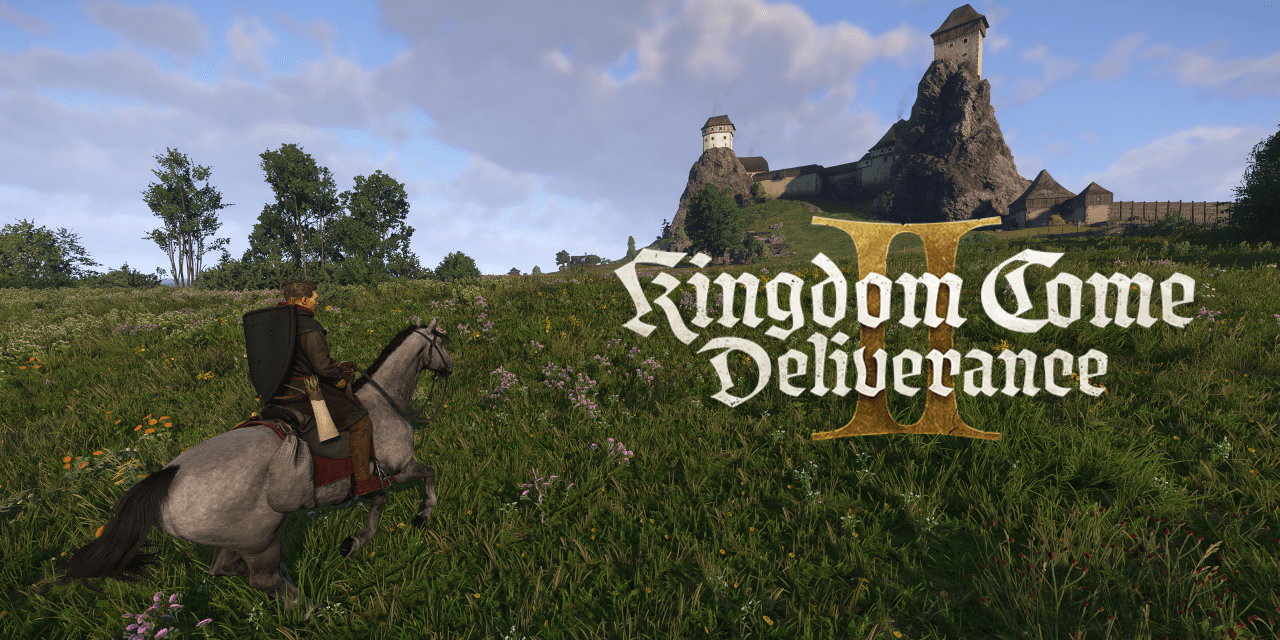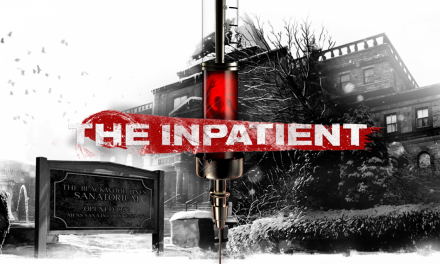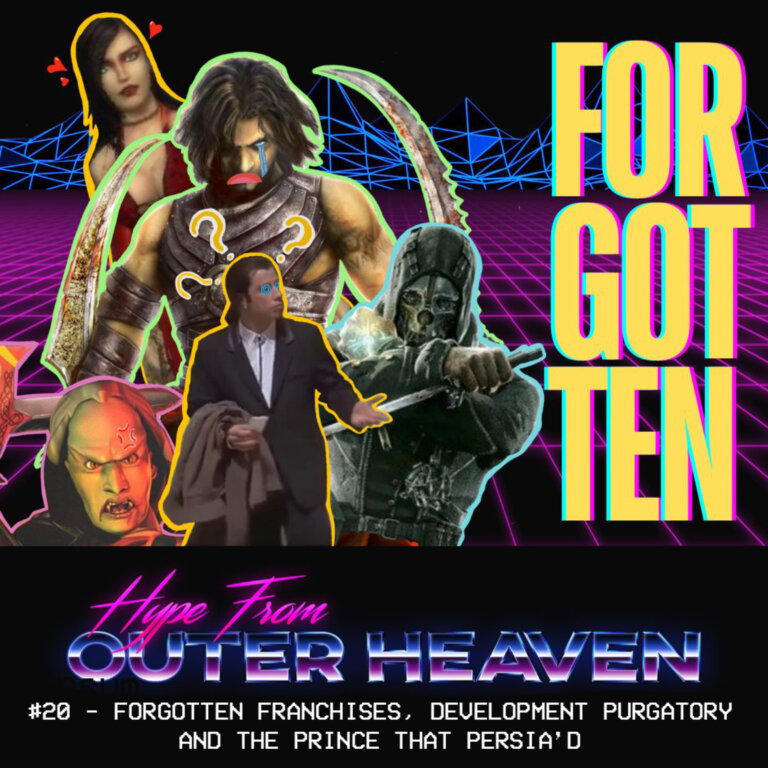“Fortune favours the brave.”
Hailing from Prague in the Czech Republic is Warhorse Studios, delivering their highly anticipated, medieval magnum opus: Kingdom Come: Deliverance II. Being a sequel to its 2018 predecessor, KC:D II raises the bar in literally every way, acting as an immersive RPG sim and history lesson to boot; portraying a hyper-realistic retelling of one of the most turbulent and bloody periods of Medieval Europe. Following my preview from earlier in the month, and ahead of its imminent release tomorrow (February 4th 2025) I’ll be going over the 100+ hours I’ve spent with the Xbox Series X version of the game since early January; detailing the good, deconstructing the bad, whilst ultimately discussing whether it’s worth your time and money at the £59.99 asking price (UK Xbox Store).
Much like the Elder Scrolls IV: Oblivion, Warhorse Studios’ Kingdom Come: Deliverance is a game that holds a special place in my heart (shameless plug for my review of the 2018 game here). Originating as a Kickstarter campaign back in 2014, KC:D was a bit hit or miss when it launched in February 2018; billed as a hyper-realistic, historically accurate RPG, the game delivered a period accurate recreation of the medieval Kingdom of Bohemia (Czech Republic in the modern day) that explored an original story starring the peasant son of a blacksmith (our dashing rogue: Henry) within the backdrop of the siege of Stříbrná Skalice (Silver Skalitz) in 1403. Despite absolutely nailing the game’s setting, the game was plagued with bugs that gave the game a somewhat uneven reputation, with some praising the setting, story scope and game mechanics despite the bugs, with others not being able to see past the swath of technical issues. I was in the former camp, giving the game a solid & certified 95% score back in Feb 2018, that could have been seen as too high; but I saw something in the game that I haven’t seen since the TES IV: Oblivion (hence why I mentioned it before) and that was the game’s lovable but clunky jank, that gave it an identity all of its own (outside of the excellent medieval world building).
By jank, I mean the general types of bugs and glitchy game situations that just happen to take place with almost perfect comedic timing, becoming a meme all on their own. Oblivion was and still is the king of this (the game’s NPC AI is legendary) and with a familiar looking UI to KC:D, it was very easy to remember the game fondly when playing Warhorses’ flawed masterpiece. Thankfully, several patches and DLC later has restored a lot of sentiment with the community, with the game going on to develop a significant cult following, with sales in the region of eight million copies as of the end of last year. Following the announcement of the sequel early last year, the hype for Kingdom Come: Deliverance II has been steadily growing, with some very lucky bar stewards (myself included) getting the game a whole month ahead of release for review coverage, and what I can (finally) officially say is that the game is nothing short of a masterpiece (warning, there will be minor gameplay and story spoilers ahead, if you fancy playing it for yourself and want a short, first impressions from yours truly, then check out my preview here).
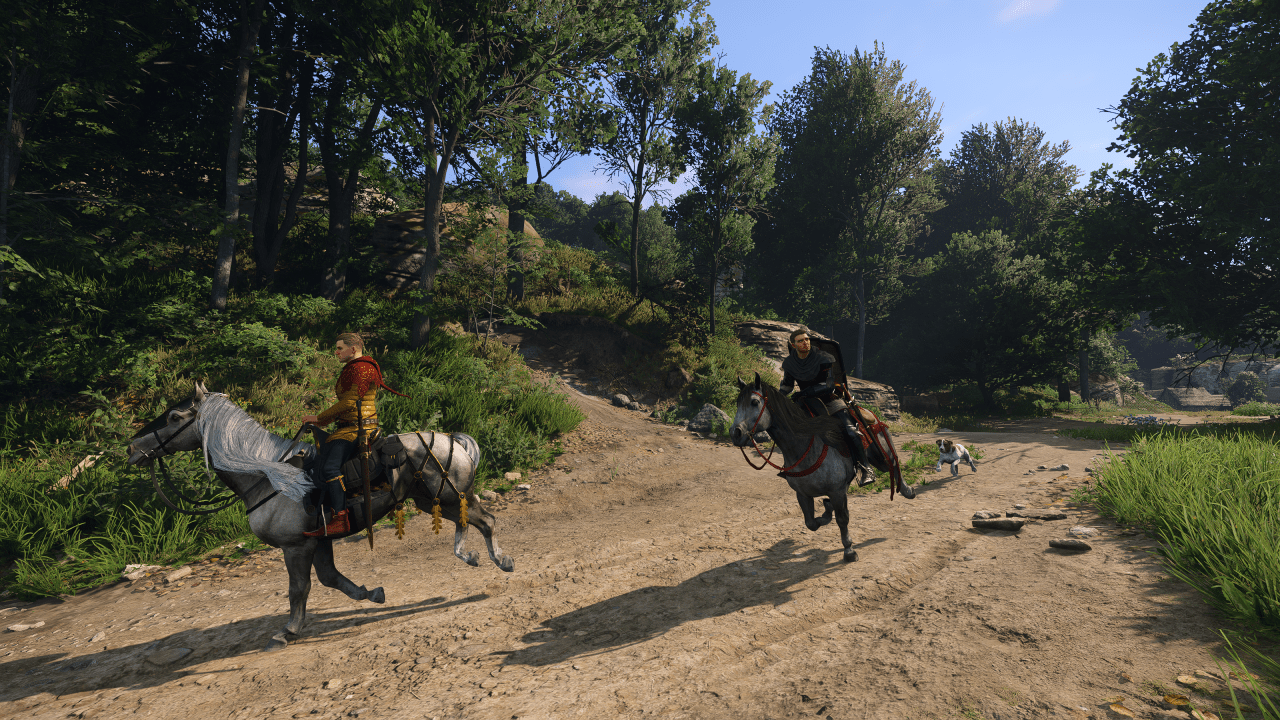
Audentes Fortuna Iuvat: Our lad Henry and Sir Hans Capon embark on the second chapter of Warhorse Studio’s Medieval Epic.
As aforementioned in my preview (once again, click here) KC:D II picks up where Kingdom Come: Deliverance left off, in that Henry and Co leave Rattay to head towards Trosky Castle, at the behest of Jobst of Moravia, to deliver a message to Sir. Otto Von Bergow, offering an alliance to band together against the usurper: King Sigismund of Luxembourg. En route, our retinue sets up camp, but are soon overwhelmed by a group of outlaws that have settled in the area. Escaping with nothing more than their underwear, Henry and Capon are left to fend for themselves in the wild, losing any proof that they are messengers on behalf of the Lords of Leipa. After being nursed back to health by a local herb woman, and some machinations later, Capon and Henry soon find themselves embroiled in a plot to fight against Sigismund and the very future of Bohemia, making them question both their honour and alliances along the way, changing them forever in the face of adversity. That’s a brief synopsis for the story of Kingdom Come: Deliverance II that one can give without giving away any major plot points or character developments, but in terms of it’s narrative, it’s leaps and bounds above that found in the original, both in terms of the quality of the game’s writing (a 2.2mil word script is no joke) as well as the general weight of player choice in relation to the growing tensions and high-risk/high-reward stakes that the region is currently embroiled in. I don’t want to go in too deep into the story, as I believe it’s one that should be experienced firsthand, but across the 100+ hours I’ve played of the game so far, I’ve never been so immersed and invested in seeing a story through to its end. Player choice is key here, throughout the game are scenarios that will leave you questioning whether you made the right choice, making you analyse your own honour (or dishonour) with outcomes and consequences that genuinely caught me off guard.
Secondary to the story, arguably another important part of the sequel is the world (or worlds) itself. Kingdom Come: Deliverance II is cut across two regions: Trosky and Kuttenberg. Trosky is the ‘Bohemian Paradise’ map, which sees scenic lakes, lush forests and quiet hamlets in the shadow of Trosky Castle, as well as other areas locals might recognise such as Vidlák Pond and the natural (but creepy) sandstone formations on Trosky hill known as Apolena. Kuttenberg is the old medieval city of modern day Kutná Hora, and is a bustling medieval trade centre on top of the local silver mines, which offers work for many of the locals in the region as well as being a prime area to control for Sigismund of Luxembourg, in order to control the region’s economy. The areas surrounding Kuttenberg are both similar and wholly different to those found in Trosky; the hamlets are primarly there to serve the economy, acting as miners, smelters and the various middle men in-between that control the Prague Groschen; other notable areas are the fortress of Suchdol, as well as the iconic Sedlec Abbey, Ossuary and Vineyard. Both of these maps together are about twice the size of the map from KC:D, with Trosky being slightly smaller and Kuttenberg being slightly larger; both maps are excellent recreations of their geographical and modern counterparts, offering further looks at the customs, architecture and lands of 15th Century Bohemia. The open world design of KC:D II is similar to that of the first, both encouraging and rewarding exploration; whether from taking hints from innkeepers regarding points of interest, or just choosing a direction and riding into the sunset; several hours can be lost exploring the maps, taking in the beautiful vistas and the lush countryside that both maps offer.
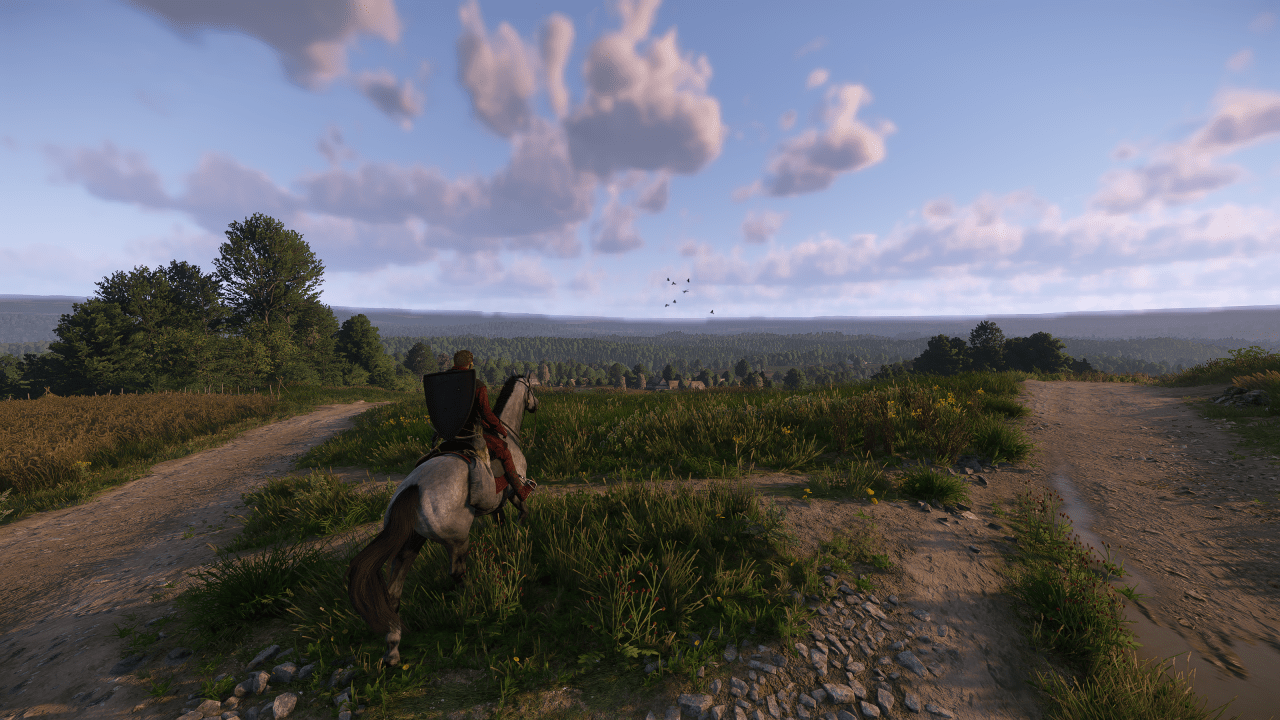
The great outdoors: Both Trosky and Kuttenberg offer vistas both similar and distinct from one another; with both maps raising the bar in terms of visuals, whilst also rewarding organic exploration.
In terms of boots on the ground gameplay, Henry suffers a terrible fall at the start of the game which is the narrative reason for him becoming a whelp again and losing several main levels, leaving him with no choice but to cover the basics again. Whilst not as hardcore as the first game (going from useless peasant to armoured badass takes time) you still need to invest time in the game’s mechanics and Henry’s skills if you don’t want to get your ass handed to you the first time you run into a footpad. The first few hours of the game act as a really good, unintrusive tutorial to a lot of the games main mechanics; things like alchemy, persuasion, and basic combat are all detailed clearly with valid narrative reasons behind them. When you reach the point early on where you’re free to go an explore the world following a certain event, this is where what you’ve learnt comes into practice. The world of Kingdom Come: Deliverance II is a beautiful, yet daunting and dangerous place for the uninitiated; simple things such as conversing with a shopkeeper for a better price on buying goods or running into a few cutthroats in the forest can get one over their head pretty fast if you’re not prepared. In terms of dealing with footpads, the game’s combat is something that has been significantly tuned on a number of fronts, there are generally less directions for you to attack from, but in turn this results in your hits connecting better (both in terms of weight and animation) with an emphasis on slicker blocking and parrying, making swordfights feel fresh yet familiar at the same time.
Combos and master strikes are easier to perform than the first game, albeit done slightly differently; Archery has had its aiming system retuned so it’s both easier and actually more accurate (archer here, I can confirm) in terms of camera position, which in turn also applies to crossbows. With crossbows, there are three types that all have their own distinct reload animations, which in turn increases the power they send flying; the new weapons are fun, and are especially effective from horseback, giving you the distance you need to reload the weapon in order to get another shot off. The other new weapons are polearms (which can be equipped now) and early forms of firearms, such as the Handgonne and Hook Gun, both of which are meme weapons. It’s extremely hard to hit targets with the new gunpowder weapons, and is even commented on by characters in game as being somewhat ridiculous. Complementary to the combat system is the new blacksmithing minigame, taking advantage of all the skills that Henry learnt from his adoptive father: Martin. Whilst there can sometimes be issues with connectivity between the hammer and anvil (horseshoes were a pain in the ass at first) the process of gathering materials, finding schematics, controlling the temperature of the metal and shaping out/sharpening a finished weapon is something that I genuinely enjoyed, and is something that I always came back to, in terms of something in game that’s genuinely soothing and relaxing, especially when you get good at it, with Henry whistling away in tandem.
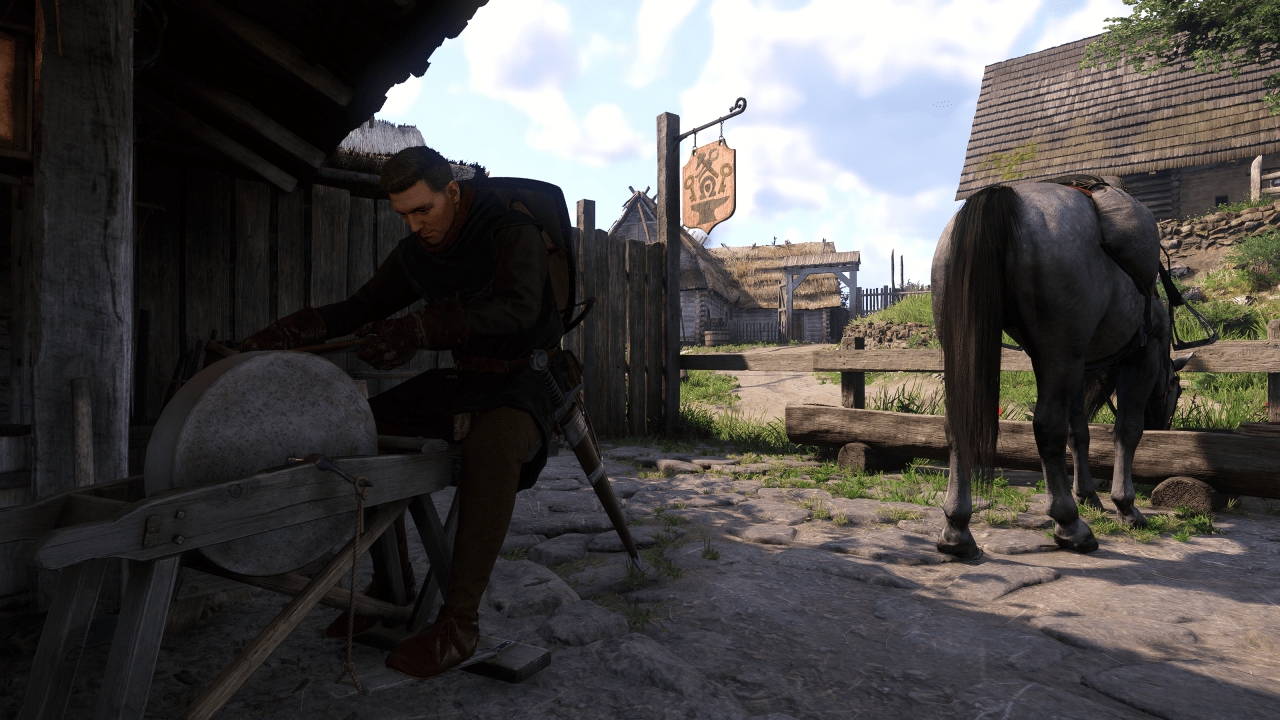
Martin’s Secret: Blacksmithing is the new crafting minigame in Kingdom Come: Deliverance II, allowing you to hone your craft, whilst building on things like maintenance and sharpening that were present in the first game.
Thankfully much like its predecessor, KC:D II is a game that encourages you to take your time, both in terms of not only honing your combat skills, but in terms of how you approach the games scenarios. You need to think about the kind of Henry you want to play, and how the world will react to your decisions around you. My Henry from KC:D was a stealthy rogue, not afraid to get his hands dirty for material gain, whilst also wondering how it would impact his soul in the long term. These kinds of decisions are important from both a role-playing perspective but also gameplay as well; it might be tempting to accept jobs from less than honourable folk or steal your way to success, but you will face difficulty in terms of your reputation and honour taking a dive in exchange. The crime and punishment system has been overhauled in Kingdom Come: Deliverance II, people generally have better memory and are smarter in terms of shady characters skulking around. If you rob a house blind, and then get caught by an owner somewhere you shouldn’t be, you can bet your arse that they will check to see if their stuff has gone missing, if it has, it won’t take them long to deduce who is responsible, soon leading your sorry hide to the pillory. In KC:D II, committing a crime comes with consequences: jail time, the pillory, branding (which will leave a permanent scar) and even execution if you go too far. Societal status also plays into the system as well; getting caught robbing some cabbages from a peasant will bring lesser consequences than say robbing a fancy longsword from a wealthy merchant, so choose your mark carefully.
One of the downsides of the first game was its state at launch; whilst my review was quite favourable for being able to overlook a lot of its core issues as charming jank, it’s had to be said that not everyone had the same outlook. I’m happy to report however than Kingdom Come: Deliverance II is extremely polished in its current pre-launch state, with a day one patch rolling out to solve some minor issues. Playing for over 100 hours on an Xbox Series X, the only issue I had occasionally would be global illumination, which would occasionally go extremely bright mid-cutscene, or dependant on the time of day/where Henry was standing; this instance was rare however, with the rest of my time being bug-free. In terms of performance, the Xbox Series X version runs at a very stable 60fps at an upscaled 1440p resolution (upscaled by AMD FidelityFX Super Resolution), thanks in part to the consoles VRR functionality, which is dependent on what TV/Monitor you’re running. The game can chug down to 40ish FPS during heavy sections with a lot going on, but the frame rate remains consistent 99%, even in areas like Kuttenberg where one would assume it would suffer, much like Rattay in the first game. A fan favourite feature of many games has also been added: a photomode. Whilst it lacks a lot of flair and options, it’s base component as a means of taking nice looking screenshots (as you’ve seen throughout this review) is a great option that many will be happy to take advantage of.
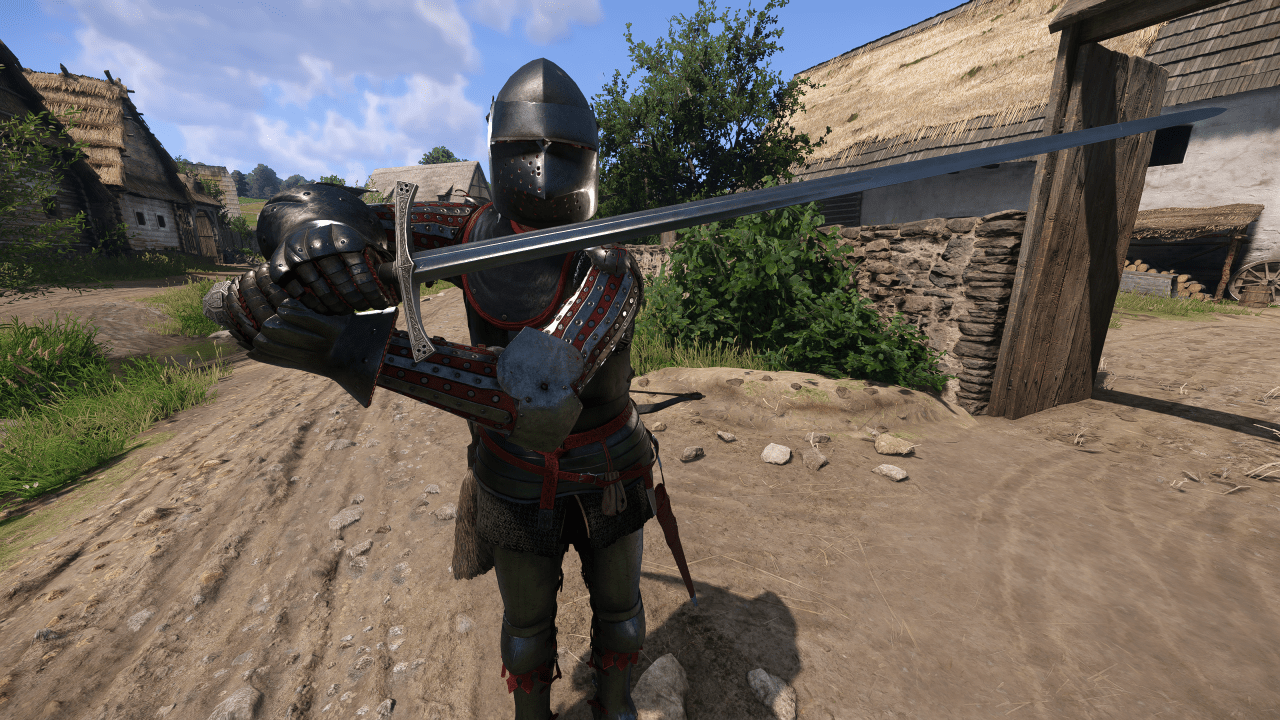
Parry this, you filthy casual: Kingdom Come Deliverance II is bold and beautiful, and being able to take screenshots in photomode compliments the game perfectly, albeit lacking in some areas in terms of features or flair.
Warhorse Studios have done it, there’s no other way of saying it. Kingdom Come: Deliverance II is a mastercraft of an RPG, delivering a hyper-accurate recreation of Medieval Bohemia that is oozing charm, finesse and style out of every pore. Featuring an enthralling open world, mastercrafted combat, a superb narrative laden with political intrigue and deception, all brought to life by an amazing score and soundtrack from the excellent Jan Valta that immerses you in the world like never before. Kingdom Come: Deliverance II is the ultimate medieval RPG, that should be on the play list of anyone who is a fan of both enthralling RPG experiences as well as the historical period itself. You owe it to yourself to pick this one up, as Daniel Vávra, Sir Tobi, Jan Valta and the rest of the gang over at Warhorse Studios (including the excellent Tom McKay and Luke Dale as Henry and Hans Capon respectively) have succeeded in creating one of the most immersive RPG’s I’ve ever played, and is easily on the road to being GOTY 2025.
An Xbox Series X review code was provided by Premier Comms/Plaion, with a special thanks to Warhorse Studios.

